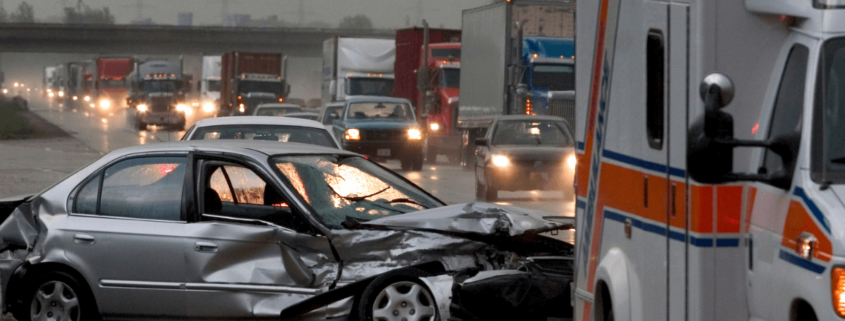Who Is At Fault in Highway On-Ramp Collisions?
On-ramp collisions often happen when vehicles are merging from an entry ramp onto a highway. On-ramp collisions can be caused by a variety of factors, such as the merging vehicle’s speed, distracted driving, or poor weather conditions. The merging process can be tricky because it requires cooperation between drivers on the highway and those entering from the ramp. If cooperation is poor, on-ramp collisions can occur. With all of these factors at play in on-ramp collisions, it should be no surprise that on-ramp collisions are fairly common.
Injured in a crash? Let’s talk about your options. Attorney Aaron Luck at McPhillips Shinbaum is here to help with your personal injury claim. Call us at 334-262-1911 to discuss your options now.
Role of the Merging Driver
Merging drivers must make sure it’s safe before entering the highway to avoid on-ramp collisions. This means matching the speed of the traffic and finding a proper gap to merge. If a merging driver fails to do this, they can be held responsible for any collision.
Responsibilities of Drivers Already on the Highway
Drivers on the highway should keep a steady speed and avoid sudden lane changes to avoid on-ramp collisions, especially near on-ramps. Although they aren’t obligated to make space for merging cars, being considerate and driving defensively can help prevent accidents. If a driver on the highway is speeding or behaving recklessly, they might also share some of the blame for an accident.
State Laws in Alabama Regarding On-Ramp Collisions
Understanding Alabama’s traffic laws can help clarify fault in on-ramp collisions. In Alabama, merging drivers are required by law to yield to vehicles already on the highway. This means that the merging driver must wait for a safe gap in traffic before entering the highway. Additionally, Alabama law stresses the importance of merging at a speed that matches the flow of highway traffic as closely as possible.
If a merging driver fails to yield or does not adjust their speed appropriately, they could be held responsible for any resulting on-ramp collisions. Neglecting to use turn signals while merging can also be a factor in determining fault. On the other hand, drivers already on the highway are expected to maintain a steady speed and avoid erratic maneuvers.
While they aren’t legally required to make room for merging vehicles, reckless or aggressive driving by highway drivers can contribute to an accident and may share in the blame.
Evidence and Documentation for On-Ramp Collisions
After an on-ramp accident, gathering evidence is essential. Documentation can help establish what occurred and who may be at fault. Start by taking photos of the accident scene, capturing vehicle damage, skid marks, and road conditions. These images can be useful for insurance claims and legal proceedings. Additionally, collect contact information and statements from any witnesses.
Their accounts can provide an unbiased perspective on the accident. If possible, obtain any available surveillance footage from nearby cameras, as this can offer a clear view of the incident. Also, be sure to file a police report. A police report includes an official account of the accident and can be an important piece of evidence.
Keeping detailed notes about the accident, including the date, time, weather conditions, and any other relevant details, can also be beneficial. All this information can help paint a comprehensive picture of the event, aiding in the determination of fault.
What If the Other Driver is Liable?
If the other driver is to blame for your on-ramp accident, you may be owed compensation. Remember that under Alabama’s pure contributory negligence law, a victim may not receive compensation if the other party can prove that they share any liability—so you should expect the other driver’s insurance company to look for any errors you made during the crash.
Your personal injury attorney can help you fight for fair and full compensation as you navigate your options after a crash. You could be entitled to compensation for your losses, including your medical expenses, lost wages, pain and suffering, and other expenses.
Choose McPhillips Shinbaum for Your Claim for On-Ramp Collisions
The team at McPhillips Shinbaum is committed to helping victims like you seek justice after an accident. If an on-ramp collision has left you injured and unsure of what to do next, don’t go through this alone. Let’s discuss your legal options now. Set up a consultation by calling us at 334-262-1911 or sending us a quick message online.










 Common Mistakes That Can Hurt Your Auto Accident Claim in Alabama
Common Mistakes That Can Hurt Your Auto Accident Claim in Alabama